Haibike are regarded as pioneers in the world of eMTBs and over the last decade they have developed from a little-known bicycle brand to one of the best-known companies in the ebike industry. To celebrate their 10th anniversary, we visited Haibike to talk about the past, present and future.
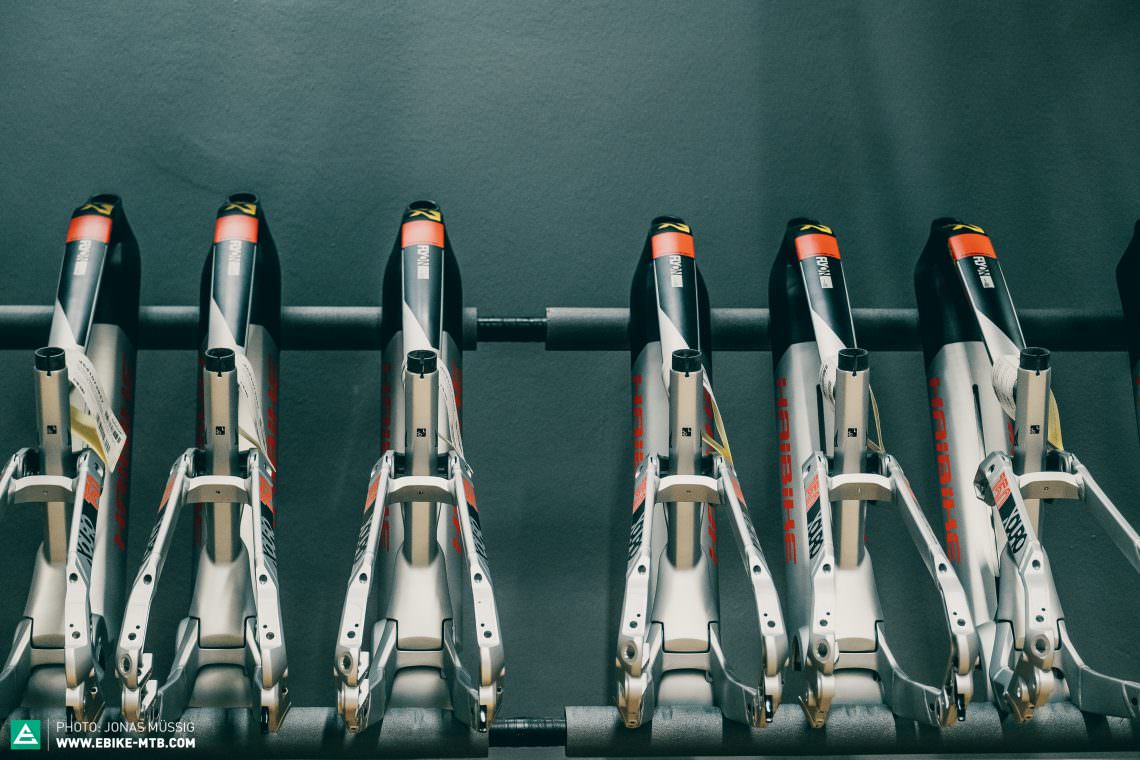
Haibike’s success story began at EUROBIKE 2010. The inconspicuous German bicycle brand surprised trade show visitors with three unique bikes on which the Bosch motor wasn’t simply bolted to the bottom of the bike, as was the norm at the time, but mounted at an angle. The advantage of doing so was that the motor was more protected, making the bikes suitable for off-road use for the first time. Haibike opened the door to eMTBs as we know them today. The presentation of this first eMTB was the catalyst that kickstarted the industry and made it reconsider the possibilities. That includes us, having founded E-MOUNTAINBIKE, the world’s first dedicated eMTB magazine, in 2013, soon after our first test rides in 2012.
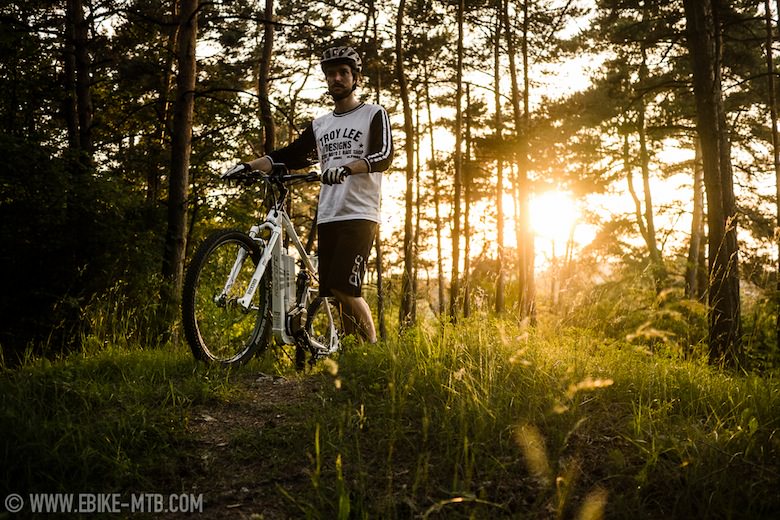
In the years that followed, Haibike regularly set trends in the electrification of (mountain) bikes, including the first 29er eMTB, the first E-road bike, the first carbon full-suspension eMTB, the first downhill eMTB and, with eConnect, the first smart ebike system that could be used to make automatic emergency calls or locate the bike. When it came to establishing new target groups and markets, Haibike was always at the forefront. The brand developed ebikes for kids, got young mountain bikers from the core scene fired up by sponsoring freeride athletes such as Sam Pilgrim and Yannick Granieri, addressed the needs of urban SUV riders and conquered markets such as North America, launching their electric models even before the big US players.

We don’t innovate only for the very top, but always aim to make our technology available to the masses in the medium term.

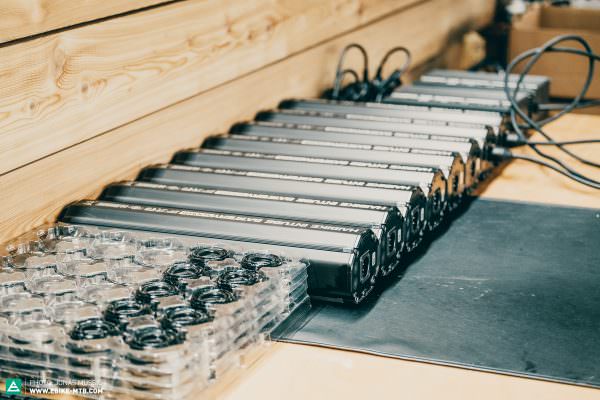
Despite all these developments, Haibike’s mission has always remained the same: to identify the needs of ebikers at an early stage and develop products for them. To do so, they need to anticipate what customers will need in the future and respond to it. Haibike have made it their goal and consider it their responsibility to make innovations available to the masses, improving the user experience and eMTB experience as a whole. When they were founded in 1995 and Haibike were still the subsidiary brand of Winora, they didn’t just set themselves the task of shifting the focus of the parent company into a more sports focused segment, but also of providing the masses with the bikes they need and want.
At Haibike, we’re obsessed about believing in what doesn’t yet exist and making it reality.
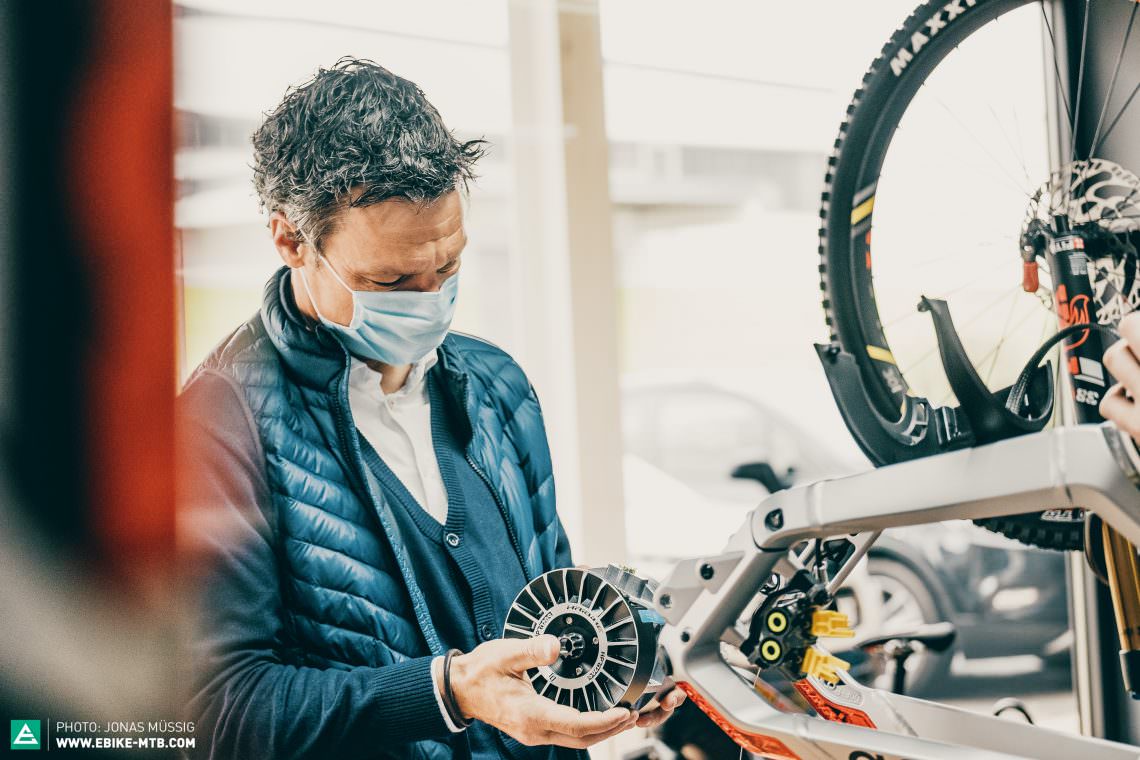
The present – Who is behind Haibike and what defines the brand?
To achieve the goals they’ve set for themselves, the development, product management, design and marketing departments at Haibike all work hand in hand. Everything is strategically coordinated. Despite the geographical separation of the two locations in Schweinfurt and Munich, and a staff totalling over 450 employees, the development teams are always in contact. This is made possible by modern means of communication, though it wouldn’t work unless the employees have the right mindset too. No matter who we spoke to during our visit, it soon became clear that everyone shares a common love of cycling and an awareness of the brand’s enormous potential to continue shaping the industry.

Regional Managing Director Accell

Brand Manager Haibike
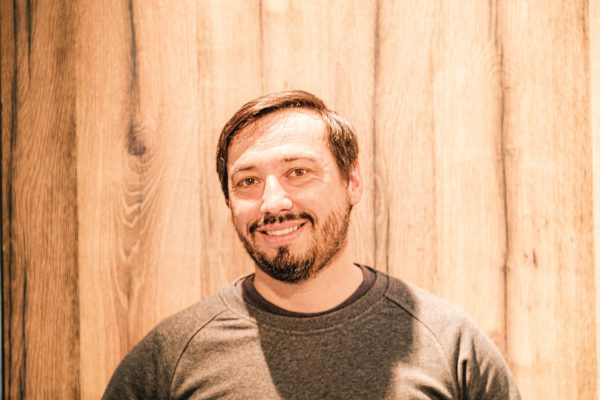
Head of R&D and Product Management
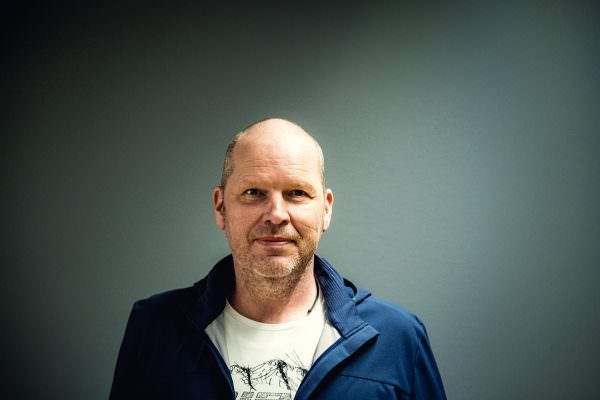
Head of the glass-fronted Factory
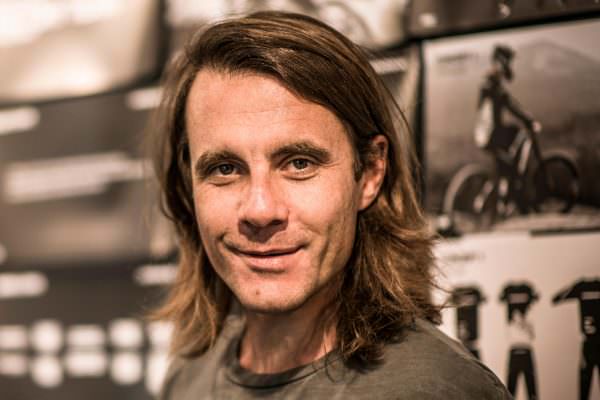
Industrial Design Lead HDCM

Co-CEO HDCM, CTG (Color Trim and Graphic) and Communication Design
For us, biking is about much more than just getting around. For us, biking is freedom, grit, passion, the desire to discover and innovation that never stops. Regardless of whether they’re newcomers, adventurers or pros, we want to encourage people to explore and expand their limits, uphill and downhill, day and night.

Public Relations
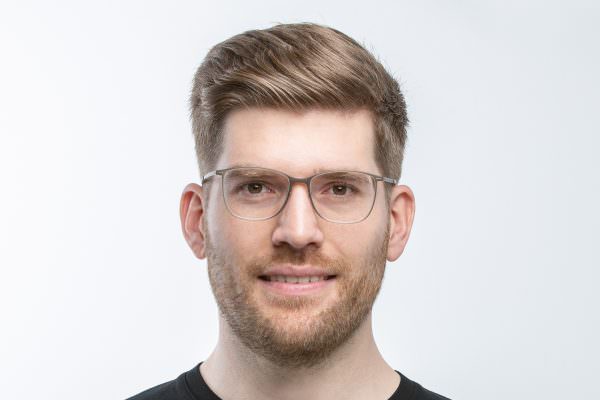
Senior Industrial Designer

Co-CEO HDCM, Head of Innovation Industrial Design
The glass-fronted factory at the headquarters in Schweinfurt
One of the highlights at the Schweinfurt headquarters is the glass-fronted factory that opened in spring 2021. 10,000 bikes are assembled here annually by 14 bike mechanics. Uniquely, the glass front allows onlookers on the street to watch how the individual components are put together to create an eMTB. Together with Udo Zrenner, head of the glass-fronted factory, we took a detailed look at every single step of assembly: from the frame as it gets fitted with electric cables, to the installation of the suspension, mounting of the brakes and wheels and the joining of the motor and bike.

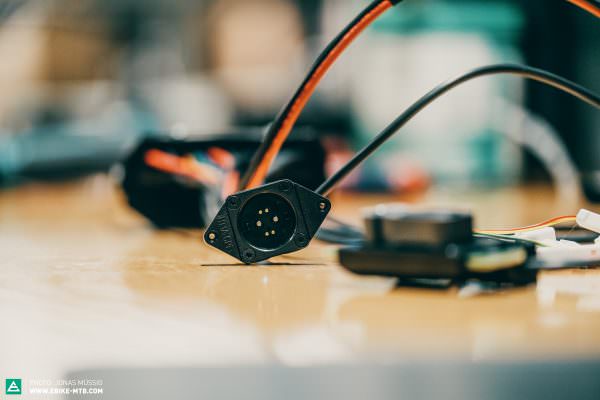
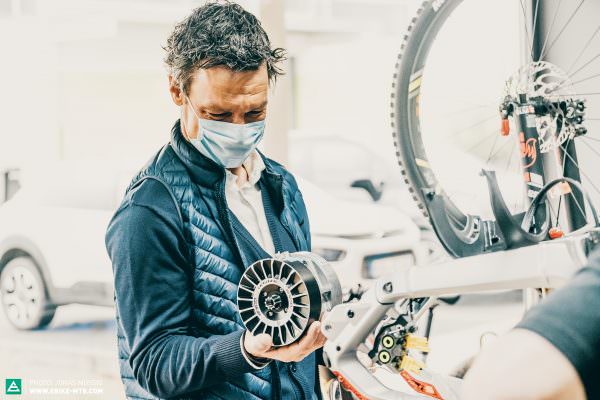
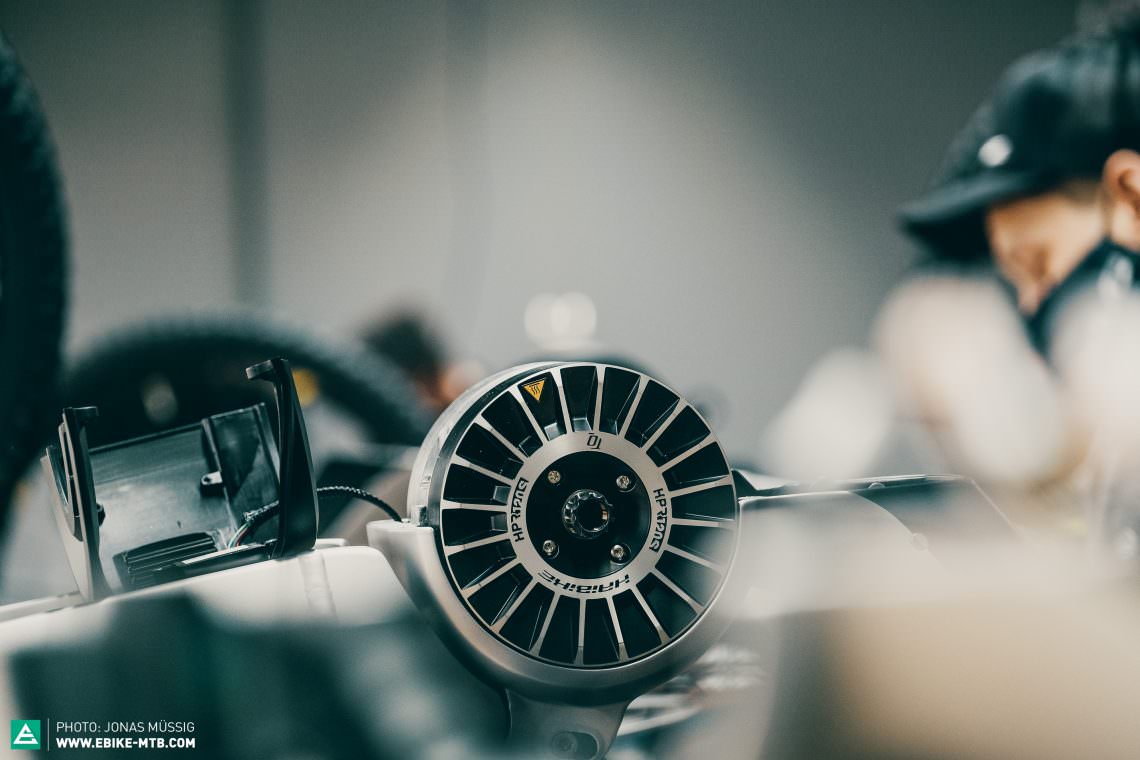
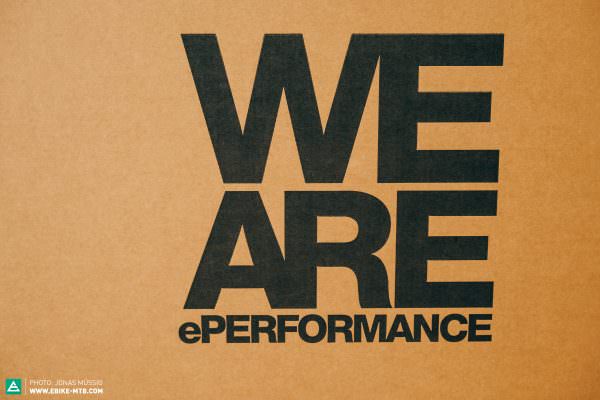
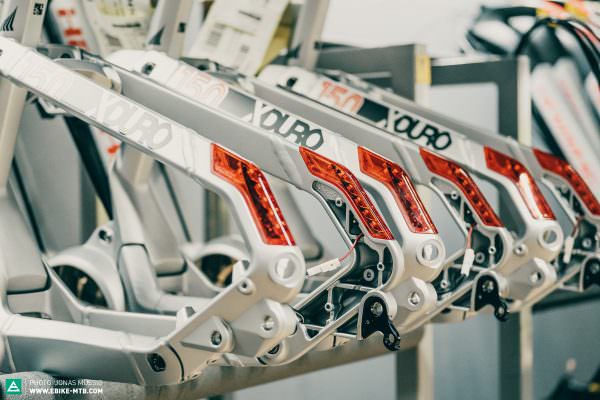
Once a bike has been fully assembled, the next step is to configure the software. With that done, the bikes have to pass through two-stage quality control – Haibike don’t just check random samples but inspect every bike individually instead. A mechanic checks everything first, followed by a machine, the eChecker. This special test rig subjects every ebike that is built in the glass-fronted factory to a virtual test ride where the motor’s maximum performance, response and lag get tested and documented.
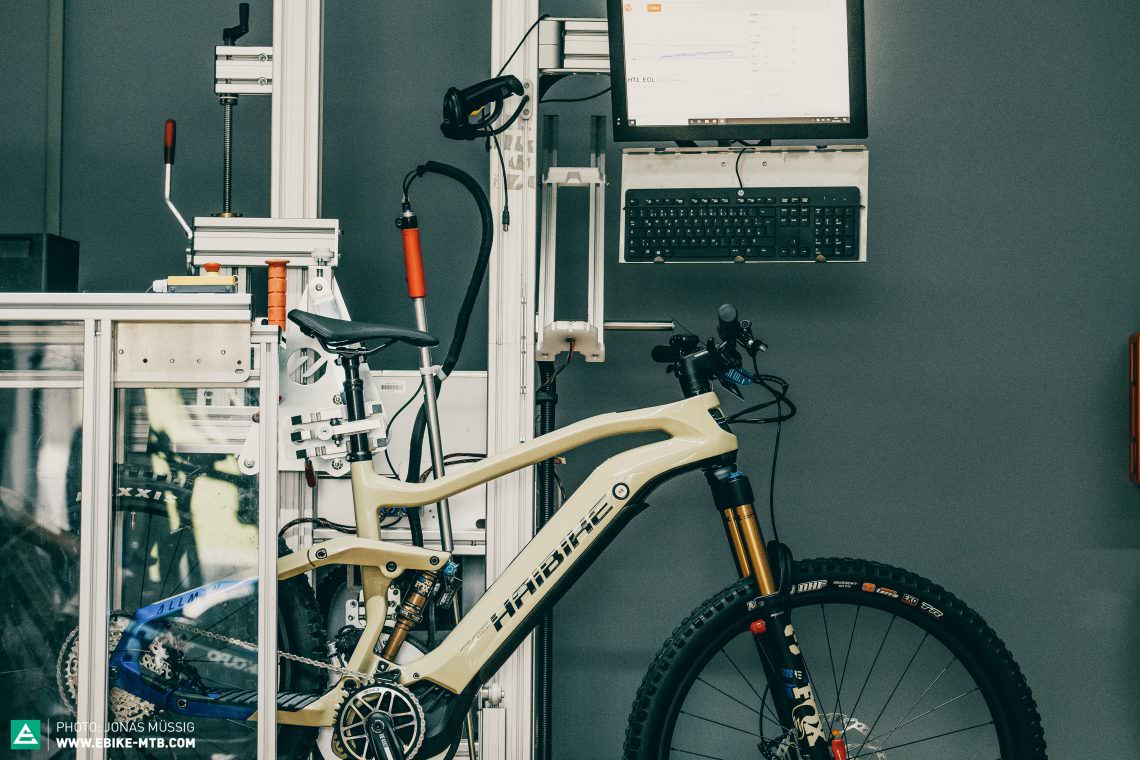
Is it all just for show? No. The glass-fronted factory doesn’t just symbolise Haibike’s modern and transparent attitude to the outside world, it also forms part of their development work. Modern eMTBs are highly complex machines. The glass-fronted factory allows Haibike to check new production steps, carry out test runs and optimise work steps before going into full production. The product management and development department also benefit from the team’s wealth of experience and their direct cooperation.
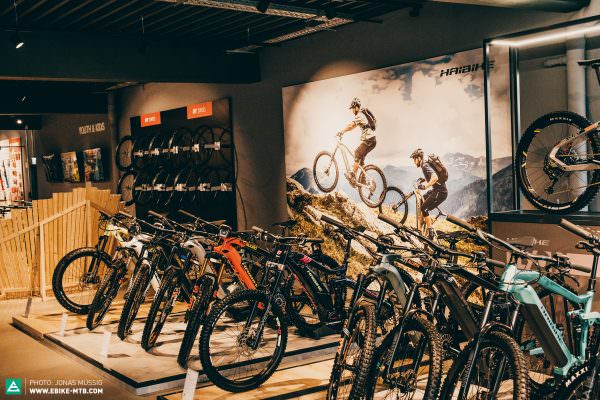

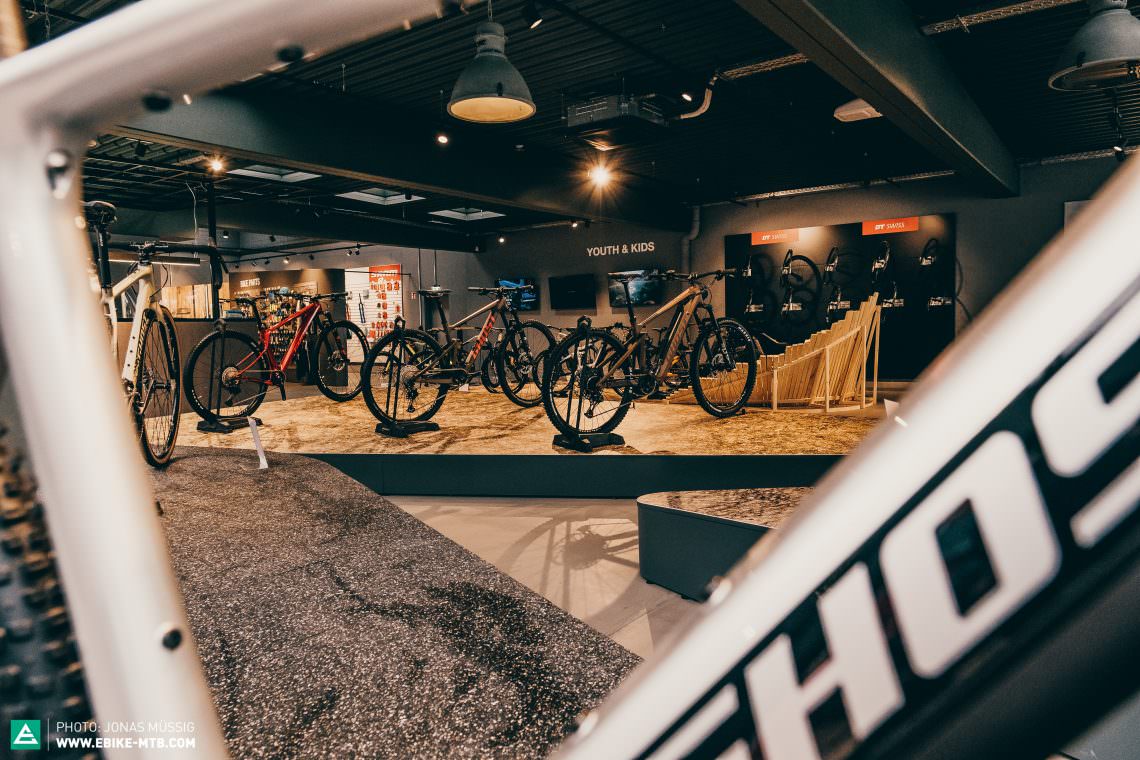
Another novelty at the Schweinfurt location is the showroom containing all the brands within the Accell Group. Christoph explains the background of the concept store and leads us through the space with bikes from Haibike, Winora, Ghost and Lapierre. Each brand has its portfolio presented on small pedestals, professionally staged with lighting. The most important suppliers, including DT Swiss and XLC, are also represented in the former industrial hall. The showroom is intended to serve as inspiration for dealers who are interested in modernising their shop floor while also showing off the diversity within Accell Group’s portfolio.
Where is Haibike today? The decisive background for the development of the Haibike AllMtn SE
Is innovation always better? Or does reaching the next level sometimes take evolution instead? If you ask Haibike, it’s a combination of both. For the AllMtn SE, celebrating their 10th anniversary of ePerformance, Haibike have combined all their knowledge and experience from previous projects. During the development of Haibike’s first completely in-house bikes, the FLYON range, the team gained experience that they’re now able to transfer to other projects. While the AllMtn SE isn’t a completely in-house bike, the team’s approach was very similar. According to Brand Manager Matthias, it’s about the overall experience of the product and the coming together of the design, function and character of the bike. The bike should wear its personality on its sleeve. For Haibike, the Special Edition is a step back to the basics, yet also a step forward.
No one should ever ask what kind of bike this is. Our bikes have to be recognised as Haibike, even if it doesn’t say Haibike.
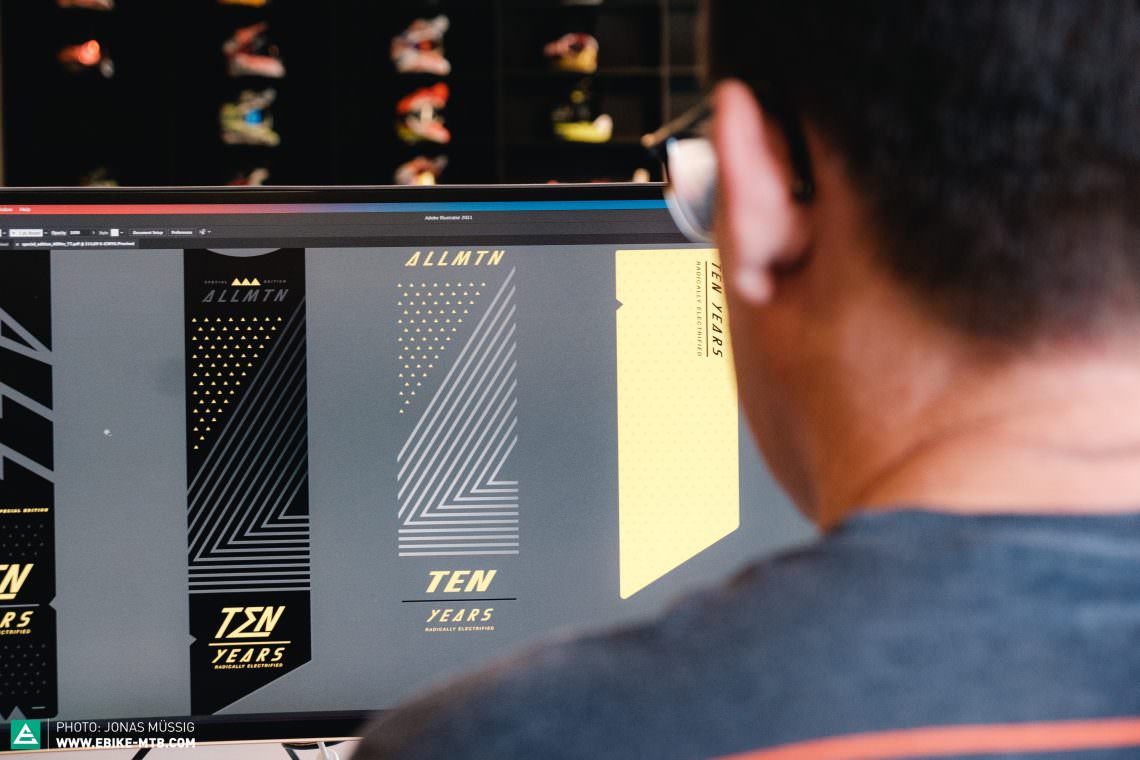
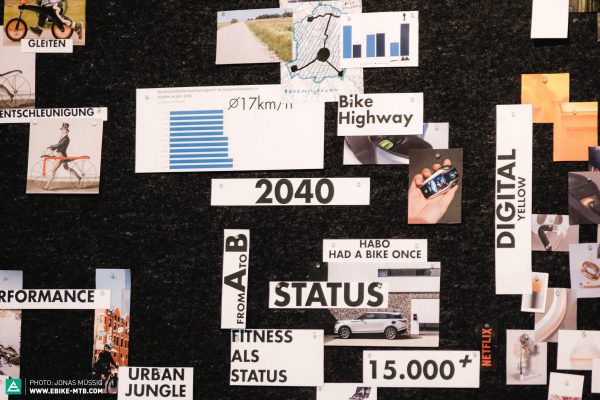
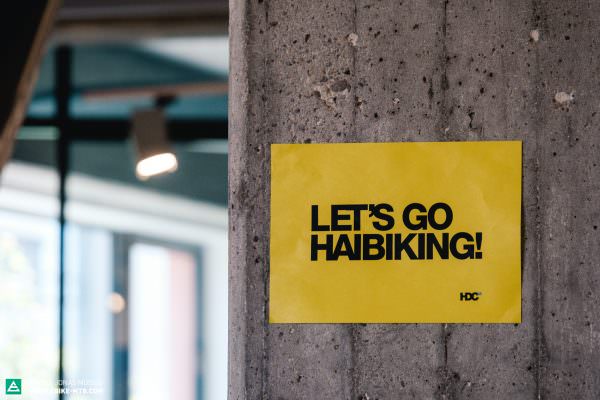

For the design team at HDCM in Munich, the task was clear: the anniversary bike should embody the connection between the past and the future. Of course, they also had to retain the unique look that defines the brand’s eMTBs. As the design team, made up of Hendrik, Piers, Benjamin and Christian, explained to us during our visit to Munich, it was clear from the start that the SE model should carry the brand’s signature DNA, though it should speak a different language – classier and more dynamic. At Haibike, bikes are seen as projects for themselves. In doing so, every detail has to be right, as, according to Christian and Benjamin, attention to detail contributes to the overall perception of the final product. For example, the battery cover of the AllMtn is not just seen as an individual, functional part, but is integrated into the overall look as seamlessly as possible. Haibike have successfully made the AllMtn SE unmistakably a Haibike. However, that’s not thanks to branding on the down tube but the overall proportions, surfaces and shaping. The design of the AllMtn SE also speaks a classier language, more reserved and discreet than you’ll be familiar with from Haibike’s earlier days. It masterfully underlines the overall design in which every detail is coordinated.
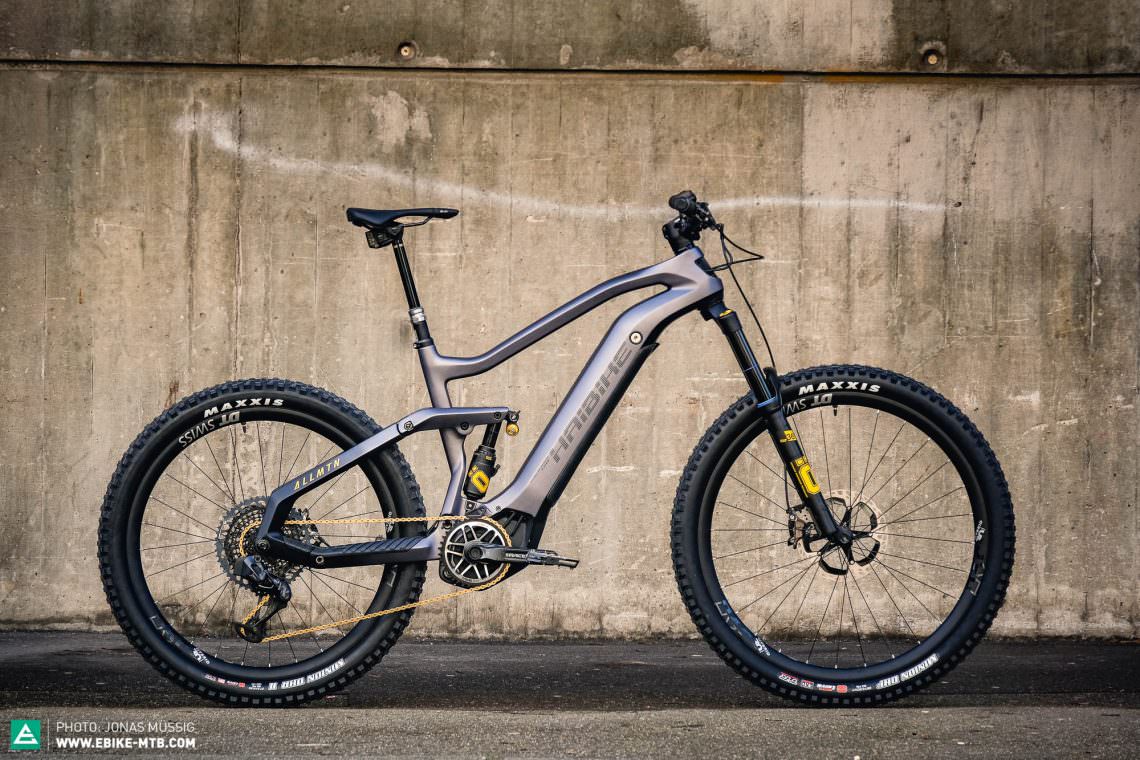
The branding on the down tube is discreet, yet the bike is unmistakably a Haibike.
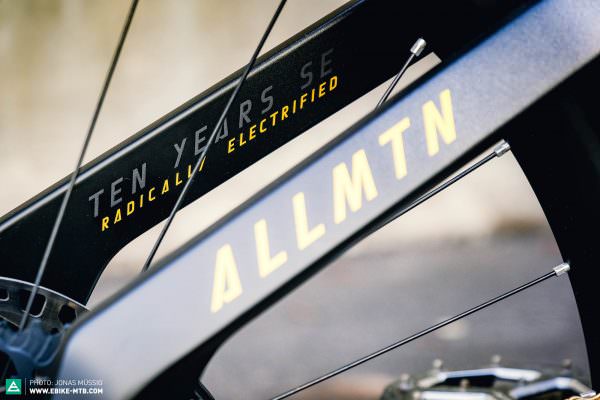
For the special edition of the AllMtn, Haibike have gone for an understated look, underlined by gold-yellow accents. The colour combination is coordinated down to the smallest detail.
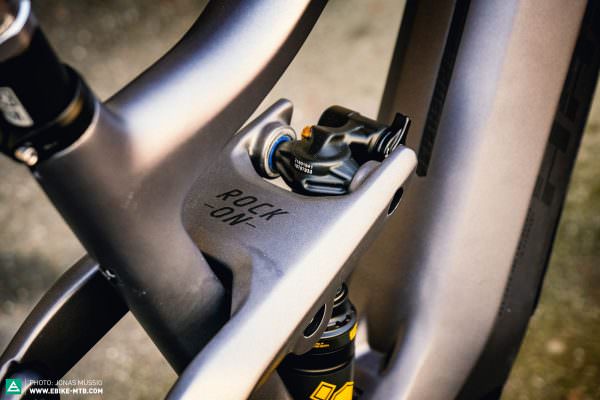
The 10th anniversary rallying cry is hidden on the rocker link.

The 160 mm travel suspension is controlled by suspension specialist Öhlins. It doesn’t just suit the looks of the AllMtn SE in terms of looks but also performs well on the trail.
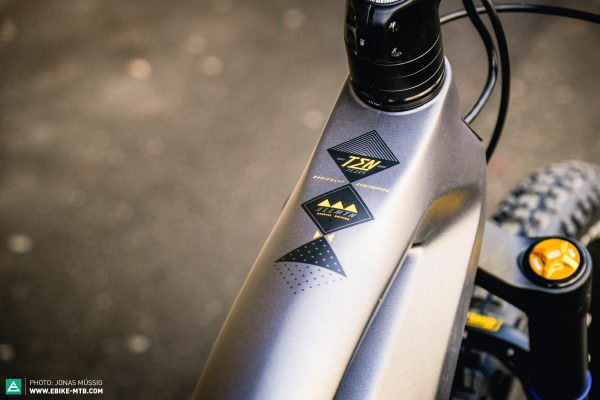
Haibike commemorate their 10-year anniversary with graphics on the top tube.
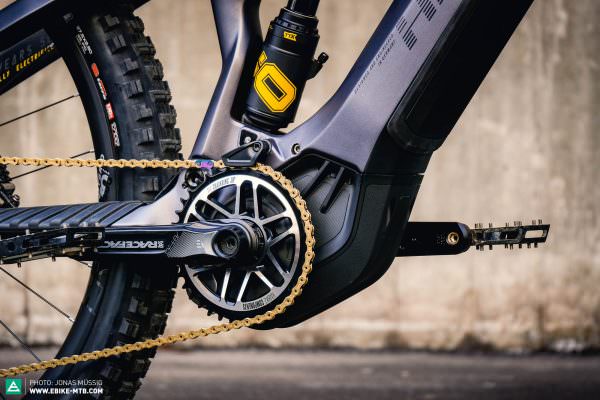
Haibike’s in-house chainring not only keeps the chain on but also keeps the eyes of passers by on it.
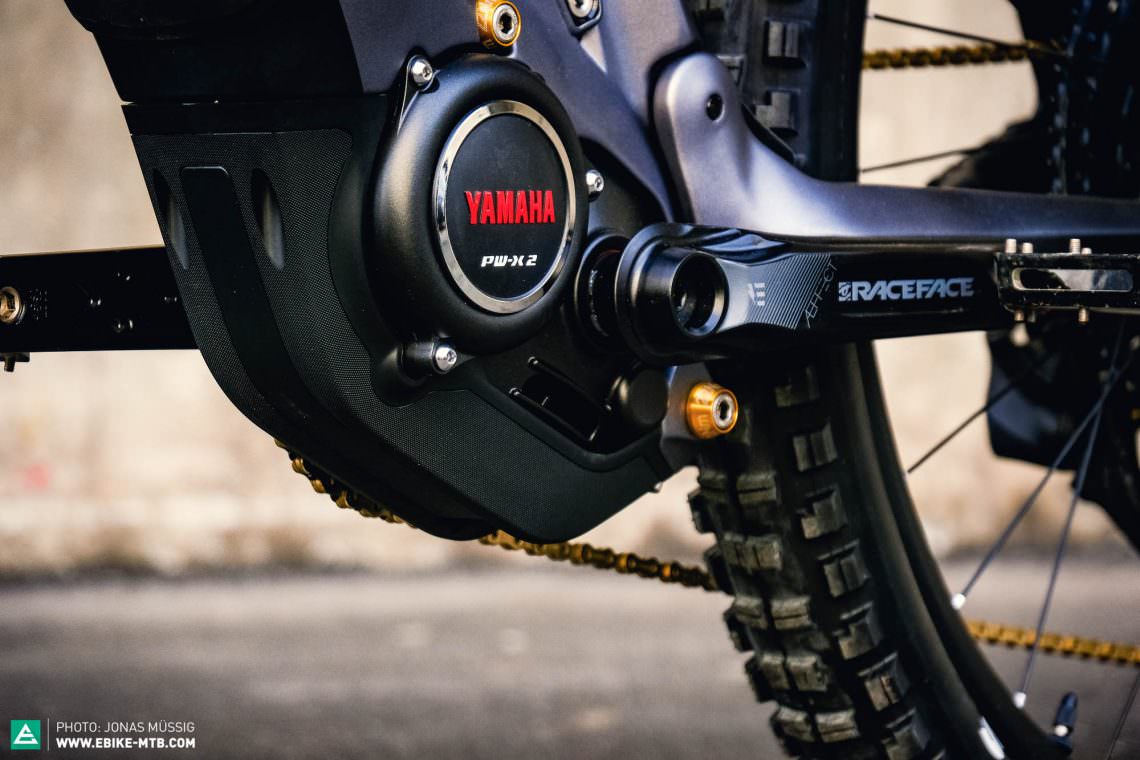 Power house
Power houseThe Yamaha PW-X2 motor is very powerful and generates a lot of torque even at low cadences, offering plenty of assistance. Haibike have also paid attention to the details here: the golden bolt caps match the rest of the look.
What’s planned for the future? What’s important to Haibike?
To focus entirely on the brand’s vision, Haibike stopped making new non-motorised bikes about a year ago. The German brand is 100% focused on electric bikes. This is where Haibike see the future and their core competence. The brand focuses on eMTBs ranging from performance-oriented models and trekking eMTBs to models that are intended for everyday urban use.They continue to be about making eMTBs accessible to the masses and allowing everyone to enjoy them. The focus isn’t on individual technical features but about the right product for the right rider. For Haibike, the focus is not on the individual bike but on the use-case. Matthias makes it clear when he says, “Our products are intended to boost customers’ self-confidence and help them develop from beginners to experts.”
The vision is clear: Haibike remains 100% ebike.
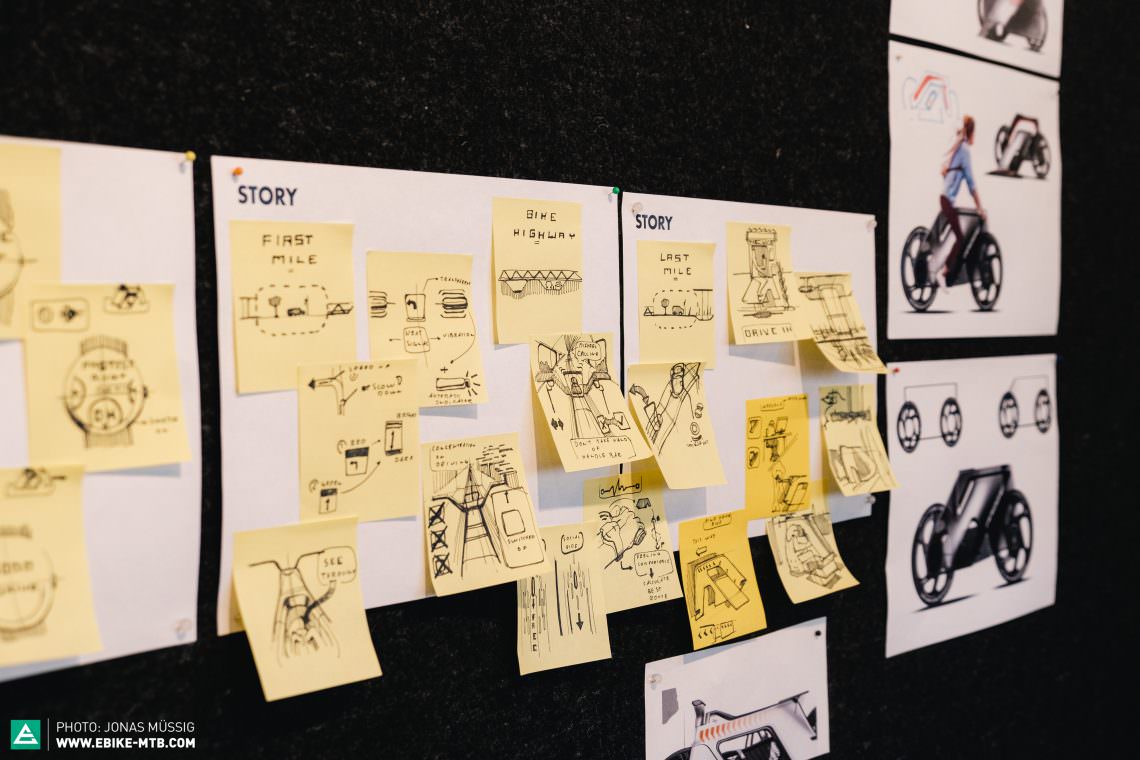
When it comes to trekking ebikes, Haibike are orienting themselves more along the lines of modern eMTBs, moving away from the classic understanding of trekking bikes with skinny tires, traditional design and poor handling. Their models promise to be future-oriented all-rounders equipped with all the right accessories, just as suitable for commuting in any kind of weather as for weekend tours with luggage.
The bicycle is the only solution to our traffic problem!
In future, the topics of commuting, the last mile and cargo bikes will also play an important role for the Accell Group and Haibike. Where do I park my cargo bike? How does infrastructure have to be adapted so that urban mobility can accommodate ebikes? And what does a solution look like both inside and outside of cities? These are all questions that the Accell Group and Haibike are confronting and which they want to actively help answer. During our visit, Christoph Mannel made it clear that there’s a lot of work to do not only in urban centres but also for riders in the suburbs and in rural areas.
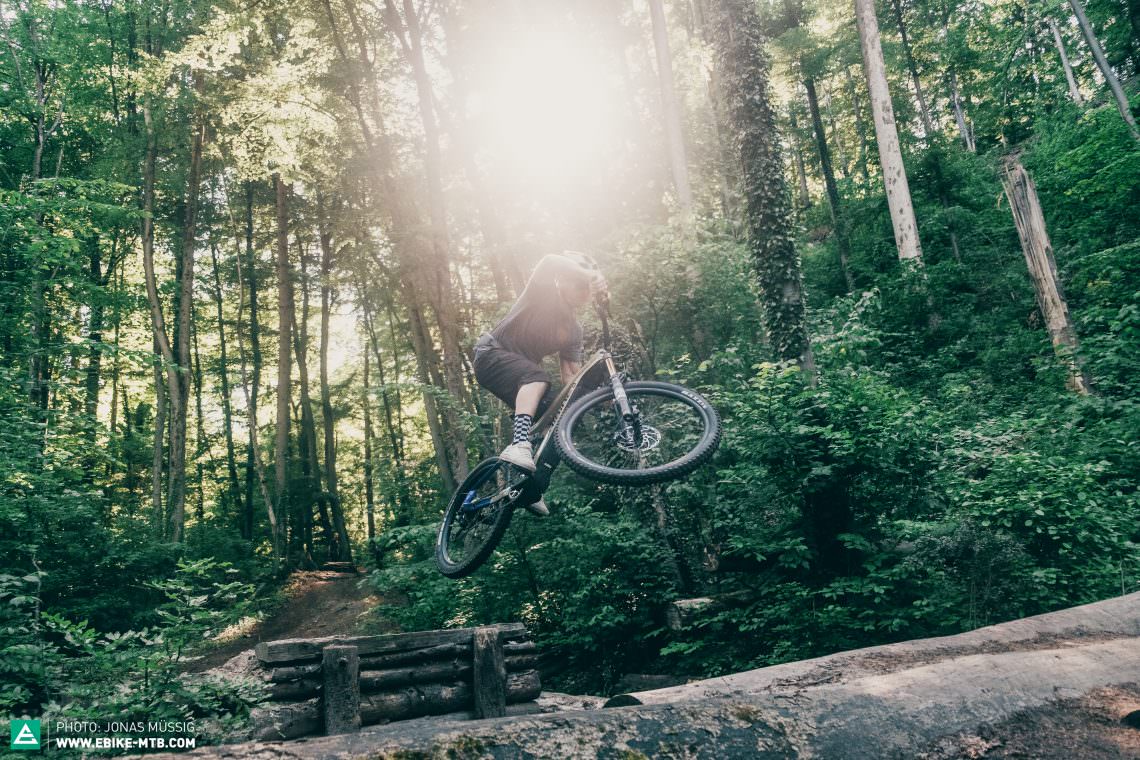

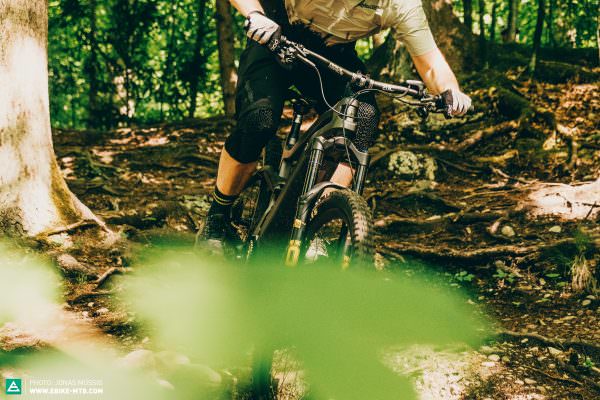
It is for this reason that a student of Pforzheim University is now working at Haibike Design Center Munich, with the aim to work out what will be possible and necessary to overcome the challenges facing urban mobility until 2040. How do we want to travel in the future and what do we need to do to be able to? What will ebikes have to look like 10 or 20 years from now to meet the demands of a changing society? We’re curious to see what answers their joint research and development will come up with and whether you will continue to immediately recognise a Haibike as a Haibike in 20 years’ time.
Once a pioneer, always a pioneer? Haibike may have introduced the world to eMTBing 10 years ago, but the company isn’t resting on its laurels. They’re keeping an eye on the future. Their focus isn’t on any kind of tinkering for the elite but on anticipating the future needs of as many riders as possible and solving their problems, all the while shaping mobility for the next 10 years. And the next 10 years after that.
You wan’t to learn more about Haibike? Click here for their website haibike.com
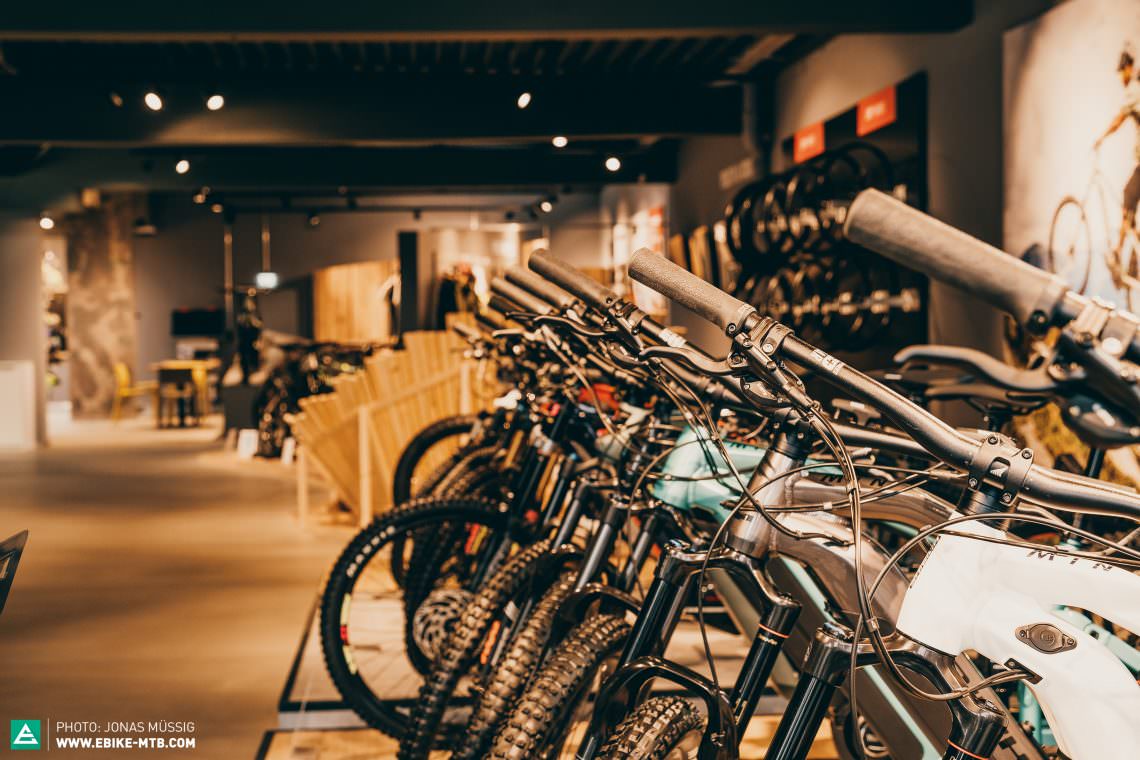
Did you enjoy this article? If so, we would be stoked if you decide to support us with a monthly contribution. By becoming a supporter of E-MOUNTAINBIKE, you will help secure a sustainable future for high-quality cycling journalism. Click here to learn more.
Words & Photos:









